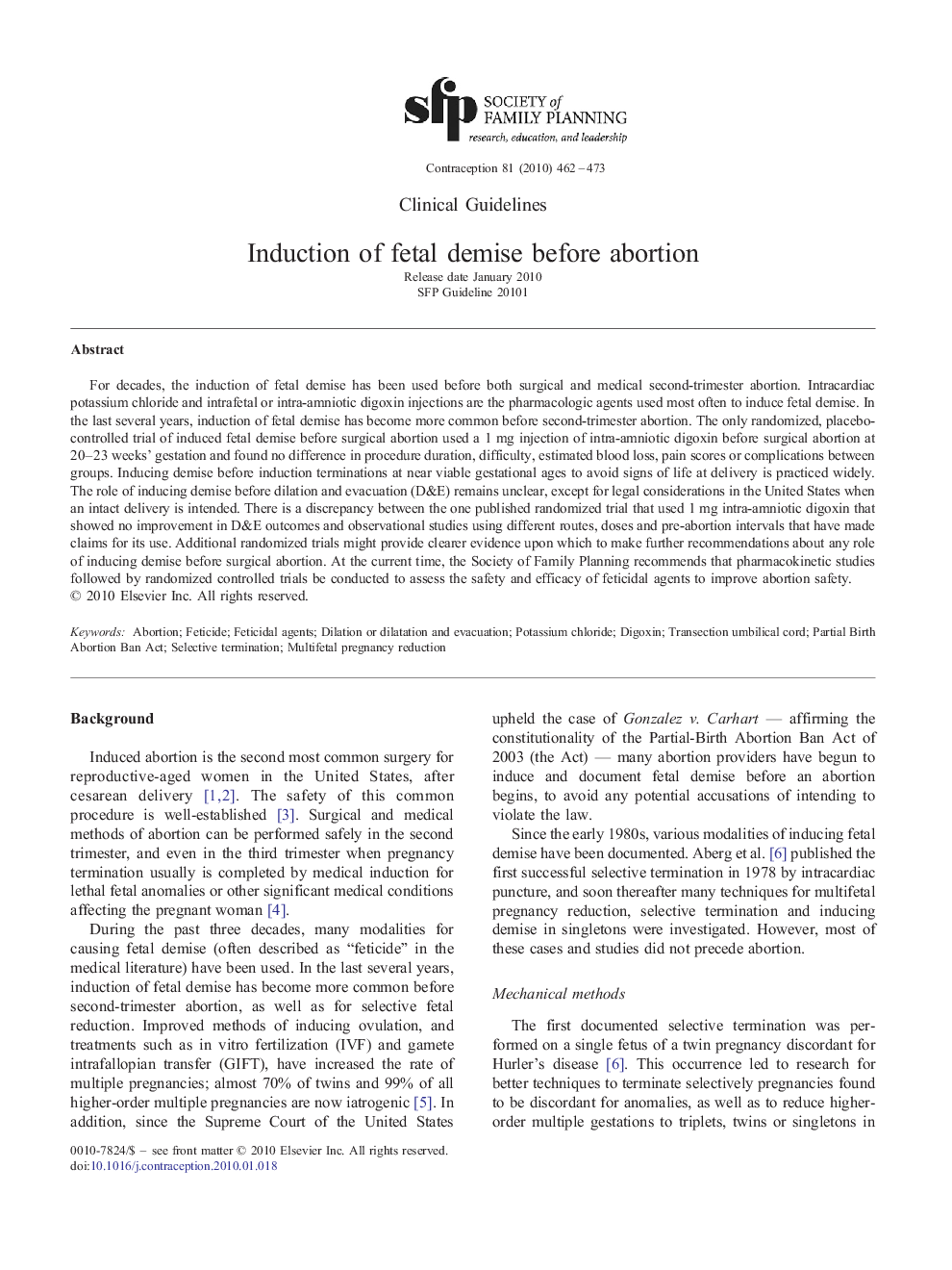| کد مقاله | کد نشریه | سال انتشار | مقاله انگلیسی | نسخه تمام متن |
|---|---|---|---|---|
| 3914414 | 1251473 | 2010 | 12 صفحه PDF | دانلود رایگان |

For decades, the induction of fetal demise has been used before both surgical and medical second-trimester abortion. Intracardiac potassium chloride and intrafetal or intra-amniotic digoxin injections are the pharmacologic agents used most often to induce fetal demise. In the last several years, induction of fetal demise has become more common before second-trimester abortion. The only randomized, placebo-controlled trial of induced fetal demise before surgical abortion used a 1 mg injection of intra-amniotic digoxin before surgical abortion at 20–23 weeks' gestation and found no difference in procedure duration, difficulty, estimated blood loss, pain scores or complications between groups. Inducing demise before induction terminations at near viable gestational ages to avoid signs of life at delivery is practiced widely. The role of inducing demise before dilation and evacuation (D&E) remains unclear, except for legal considerations in the United States when an intact delivery is intended. There is a discrepancy between the one published randomized trial that used 1 mg intra-amniotic digoxin that showed no improvement in D&E outcomes and observational studies using different routes, doses and pre-abortion intervals that have made claims for its use. Additional randomized trials might provide clearer evidence upon which to make further recommendations about any role of inducing demise before surgical abortion. At the current time, the Society of Family Planning recommends that pharmacokinetic studies followed by randomized controlled trials be conducted to assess the safety and efficacy of feticidal agents to improve abortion safety.
Journal: Contraception - Volume 81, Issue 6, June 2010, Pages 462–473